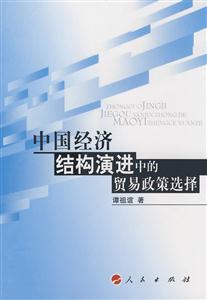
作者:卢真著
页数:307
出版社:经济科学出版社
出版日期:2015
ISBN:9787514155549
电子书格式:pdf/epub/txt
内容简介
本书将从理论和实践两方面比较碳排污权交易和碳税两种政策措施,探讨最适合中国的政策措施,及实施该政策后的主要经济影响。本书首先调研国内现有排污权交易案例,通过官方报告的数据和访谈等方式重点分析太原市控制二氧化硫排放项目。研究发现,太原市二氧化硫交易项目并没有真正意义上运行起来。从减排效果、成本节约、创新和新能源投资以及投资外溢等角度评估,太原市二氧化硫交易称不上一个成功的排污权交易项目。考虑到中国经济市场化程度不高、法律基础不完善,我们认为排污权交易还不是中国现阶段最好的政策措施,而碳税是当前最可行的措施。本书利用一般均衡模型分析碳税对中国的经济影响。模型结果表明实施碳税会对中国经济造成一定的负面影响,但考虑到其所能达到的减排效果,该负面影响是可以接受的。实施碳税后,碳密集程度越高的行业受影响越大,会引导人们从高碳能源转向低碳能源或清洁能源。此外,通过将碳税收入转移支付给家庭,碳税对经济的负面影响可以得到一定程度的缓解。借鉴澳大利亚的经验,中国可以将碳税作为一个过渡政策,当市场机制更加成熟之后再转向碳排污权交易政策。
作者简介
卢真,女,澳大利亚环境经济学博士,中央财经大学财政学院讲师,主讲《财政学》、《政府预算》等课程。主要研究领域包括环境税、碳排放与碳交易、政府预算等。
本书特色
本书将从理论和实践两方面比较碳排污权交易和碳税两种政策措施,探讨最适合中国的政策措施,及实施该政策后的主要经济影响。本书首先调研国内现有排污权交易案例,通过官方报告的数据和访谈等方式重点分析太原市控制二氧化硫排放项目。研究发现,太原市二氧化硫交易项目并没有真正意义上运行起来。从减排效果、成本节约、创新和新能源投资以及投资外溢等角度评估,太原市二氧化硫交易称不上一个成功的排污权交易项目。考虑到中国经济市场化程度不高、法律基础不完善,我们认为排污权交易还不是中国现阶段最好的政策措施,而碳税是当前最可行的措施。本书利用一般均衡模型分析碳税对中国的经济影响。模型结果表明实施碳税会对中国经济造成一定的负面影响,但考虑到其所能达到的减排效果,该负面影响是可以接受的。实施碳税后,碳密集程度越高的行业受影响越大,会引导人们从高碳能源转向低碳能源或清洁能源。此外,通过将碳税收入转移支付给家庭,碳税对经济的负面影响可以得到一定程度的缓解。借鉴澳大利亚的经验,中国可以将碳税作为一个过渡政策,当市场机制更加成熟之后再转向碳排污权交易政策。
目录
list of figures
list of abbreviations and acronyms
chapter introduction
1.1 background
1.2 statement of the problem
1.3 motivation for this research
1.4 research objectives and questions
1.5 scope of this research
1.6 the structure of the book
chapter 2 review of policy options for mitigating carbon
emissions
2.1 introduction
2.2 command-and-control regulations
2.3 subsidies
2.4 pollution taxes
2.5 emissions trading
2.6 a comparison of policy instruments
2.7 conclusion
chapter 3 emissions control policies and practice in china …
3.1 introduction
3.2 the policy context
3.3 the existing climate change policies in china
3.4 emissions trading practice in china
3.5 a comparative perspective of the chinese context
3.6 conclusion
chapter 4 methodology
4.1 introduction
4.2 research framework
4.3 case study
4.4 ghgs perspective interview
4.5 reliability and validity in qualitative research
4.6 conclusion
chapter 5 analysis and discussion of the case study and interview
results
5.1 introduction
5.2 results for the case study
5.3 prospects for carbon emissions trading
5.4 discussion
5.5 conclusion
chapter 6 a carbon tax cge model for china
6.1 introduction
6.2 cge modelling
6.3 chinese carbon tax cge model
6.4 data for the cge model
6.5 the cge model software solution
6.6 conclusion
chapter 7 cge model results and analysis
7.1 introduction
7.2 simulation scenarios and fuel-specific tax rates
7.3 the environmental effect of carbon tax in china
7.4 the macroeconomic impacts of carbon tax in china
7.5 the sectoral effects of carbon tax in china
7.6 the impacts of carbon tax on energy consumption structure
in china
7.7 discussion
7.8 conclusion
chapter 8 conclusion and policy implications
8.1 summary and conclusion
8.2 policy implications of this research
8.3 main contributions of this research
8.4 limitations and future research
8.5 a final word
bibliography
appendix 1 list of important events in emissions trading practice
in china
appendix 2 progress on emissions trading practice since 2006
appendix 3 administrative regulations for so2 emissions trading
in taiyuan city
appendix 4 interview questions 1
appendix 5 interview questions 2
appendix 6 interview questions 3
appendix 7 plain language statement
appendix 8 consent sheet
appendix 9 profile of coded enterprises and coded managers
appendix 10 data source for the 2007 china social accounting
matrix
appendix 11 data source for all the parameters (including the
exogenous variables)
appendix 12 the value of parameters set exogenously














